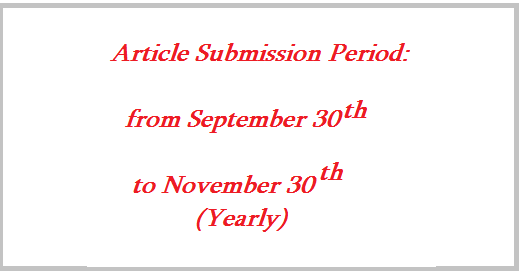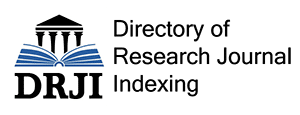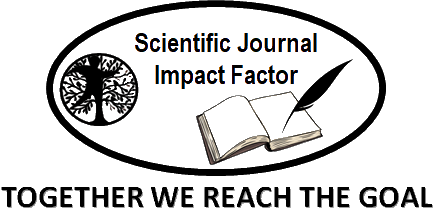Methods of Georgian Term Formation: On the Example of Botanical, Zoological and Anatomical Terms
DOI: 10.55804/jtsuSPEKALI-18-14
In the modern era, when science and technology are constantly evolving, it is especially important to study the problems of terminology. The development of fields gives rise to many new scientific concepts. Accordingly, on the one hand, it is necessary to describe the concept, determine its main characteristics and create an adequate definition [ISO 704:2022: 53-82], and on the other hand, it is necessary to designate the concept, i.e. to give a name to it that should also comply with international standards and the peculiarities and linguistic norms of the given language [ISO 704:2022: 83-104]. Without such activities, the development of fields is also hindered, since terminology is a necessary condition for the relation between field specialists. That is why a lot of attention is being paid to terminology both nationally and internationally.
Terminology is a set of terms of a particular field. R. Gambashidze in her monograph on Georgian terminology explains the term as a special linguistic sign that provides communication and mutual understanding between specialists [Gambashidze, 1986].
Al. Glonti explains this term as follows: „A term is a word denoting a concept, or a concept expressed by a word. It should express the corresponding concept with maximum accuracy and correctness [Glonti, 1964: 45]. In his opinion, the concept is a form of human thinking in which the essential features of an object, event and objective reality are expressed. Objects, events and objective reality is studied and explored by various fields of knowledge - science, technology, art, some areas of which have their own system of concepts, their own terminology. According to Al. Glonti, terminology is as necessary for the language of science as air is for man. The main advantage of terms is the accuracy, which makes them durable. „Any change in the meaning of terms causes chaos in science. That is why science should be attentive to the issue of choosing a term, as well as the chosen word should be treated carefully and no one should be allowed to distort it“, says Al. Glonti [Glonti, 1964: 47].
D. Melikishvili emphasizes that specialised terms are the main specifics of the scientific language. „While the concept has not acquired its own designation - the term, it lacks certainty, and in its turn, the defined term contributes to the maturing of the scientific concept and, thus, the development of this science itself. Terminological work is a conscious process. All branches of science strive to develop their own language, where the semantic definition of information should be based on an unambiguous connection between the linguistic sign and the signified concept“ [Melikishvili, 2022: 30-31].
In terminology, special importance is attached to the question of the adequacy of the term and concept. “A well-formed term should certainly give an idea of the relevant subject or event. Therefore, such a term is considered ideal, which is transparent in its content and makes it easy to guess the meaning of the corresponding concept“ [Gambashidze, 1986: 14].
The accelerated development of science and technology in recent years has led to the emergence of many new concepts, which in itself implies the assignment of a name to them, that is, the emergence of a new term. Technology has penetrated into all spheres of society, creating a need for new means of communication. The vocabulary of the language spoken by a particular community requires constant updating. Scientific and technological development is especially active in economically strong countries, so knowledge is mainly obtained from these countries. All this leads to the borrowing of a large amount of technical or scientific vocabulary by other, less powerful countries. To combat and control this process, such countries need to develop terminology policies that are mainly defensive in nature, so that these processes do not destroy their language and there is no uncontrolled influx of terms into a particular language. Therefore, terminological activity is an important part of language standardization and planning [Cabre, 1992]. One fact remains unchanged that the goals and methods of terminological activity in all countries are more or less different, which is determined by the political, socio-economic or linguistic situation in the country [Rondeau... 1986].
The development of science and technology obviously causes the influx of new scientific concepts in the Georgian language as well, which creates great problems for modern Georgian terminology. Georgian lexicographers and field-experts emphasize that terminological work in Georgia is somewhat hampered, that many terms in various fields are mainly introduced in Georgian through borrowings, which we cannot consider a really positive trend [Gogia, 2023; Margalitadze, 2019; Karosanidze, 2012].
To test this trend, in 2022-2023, we conducted a quantitative study of 1,600 terms from various fields of biology. Our goal was to investigate the percentage of term loans in modern fields, for which the fields of genetics, immunology and biotechnology were selected. We analysed 800 terms of the specified fields and it was revealed that 75-80% of them are borrowed. We compared this result with the terminology of more traditional fields, for which we selected 800 terms from the fields of botany, zoology and anatomy. The analysis of the terms of these fields demonstrated a completely different situation, in particular, almost 80% of the analysed terms turned out to be derived using the resources of the Georgian language [Kvitsiani, 2023].
It was the results of this study that aroused our interest in an in-depth study of the methods of formation of terms of traditional fields, namely botany, zoology and anatomy in the Georgian language. To analyse the methods of Georgian terminology, we have relied on R. Gambashidze’s monograph (1986) and the international standard „ISO 704-2022, Terminological Work – Principles and Methods“. In the study, we have used the method of etymological analysis. We compared the Georgian terms with the corresponding Russian and English terms. As is known, Georgian terminology was heavily influenced by the Russian language in the 20th century, which led to the inclusion of Russian terms in research. The comparison with English terms was motivated by a comparative study of the term formation methods. To determine the etymology of English terms, we used the "Oxford English Dictionary of Historical Principles" (OED) and the Etymological Online Dictionary of the English Language, located on the website etymonline.com.
As a research material, we used 800 terms from the fields of botany, zoology and anatomy selected for the above-mentioned article [Kvitsiani, 2023]. The terms are collected from the English-Georgian Online Biological Dictionary, the English-Russian-Georgian Biological dictionary of Tsiala Menabde, the Botanical dictionary of Alexander Makashvili and other sources (see the list of references). The terms are randomly selected and studied from the point of view of the formation of terms. To do this, as already mentioned, the method of contrasting terms in three languages, as well as the method of etymological research have been used.
2. Methods of formation of botanical, zoological and anatomical terms
In this chapter, we present samples of the terms that we have analysed. The study revealed that in such traditional fields as botany, zoology and anatomy, Georgian terms were mainly created through structural or semantic borrowings from Russian or Latin. The main source of loan translation (structural loans) was the Russian language, which was due to the political situation in the country at that time and the dominance of the Russian language. However, it should be noted that the resources of the Georgian language were used to create the terms, i.e. in the structure of the Russian or Latin term, Russian and Latin words were replaced by Georgian words (see examples 1-20):
1. Aardvark - an English zoological term borrowed from Afrikaans and literally meaning „earth pig“ (aard „earth“ + wark „pig“) (etymonline.com). The German name of this South African animal is Erdferkel. The German term is a loan translation from the Afrikaans language, and the Afrikaans words aard + vark have been replaced by the German words Erd + Ferkel.
The equivalent of this term in Russian is „африканский трубкозуб“. Most likely, the Russian term originates from a loan translation of one of the Latin names of this animal – Tubulidentata, which literally means a small tube and a tooth.
The Georgian equivalent of this term is „აფრიკული მილკბილა“.
***
As we can see, the English term is borrowed from the Afrikaans language, the German term is a loan translation from Afrikaans, the Russian term is probably a loan translation of one of the Latin names of this animal, and the Georgian equivalent is formed by a loan translation of the Russian term.
2. Aardwolf - an English zoological term meaning „earth wolf“.
The English term is borrowed from the Afrikaans language and consists of 2 roots: aard – earth and wolf – wolf (etymonline.com ).
The Russian equivalent of this term is „земляной волк“, which is a loan translation of the Afrikaans term.
The Georgian equivalent of this term is „მიწის მგელი“.
***
The English term is borrowed from Afrikaans, the Russian term is probably a loan translation from Afrikaans, possibly – from Dutch (also aardwolf), and the Georgian term is a calque of the Russian term.
3. Barnacle - an English zoological term borrowed in the Middle English period from the French language. Its original meaning was „wild goose“, and the meaning of „representative of the class of shellfish“ has been attested in England since 1580. An interesting German equivalent of this term is Entenmuschel, which literally means „duck-mussel“ (etymonline.com).
The Russian equivalent of this term is „усоногий рак“.
The Georgian equivalent of this term is „ულვაშფეხიანი კიბო“.
***
As can be seen from this analysis, the Georgian term was created by structural borrowing from the Russian language.
4. Bream - an English zoological term borrowed from the French language in the Middle English period (etymonline.com).
The Russian equivalent of this term is „белоглазка“.
The Georgian equivalent of this term is „თეთრთვალა“.
***
The English term is borrowed from French. The Georgian term was formed by structural borrowing from the Russian language.
5. Icefishes - an English zoological term consisting of English native words „ice“ and „fish“. This term is used to refer to a type of fish (etymonline.com).
The Russian equivalent of this term is „белокровные“.
The Georgian equivalent of this term is „თეთრსისხლასებრნი“.
***
The English term is an internal creation in English. The Georgian term is a loan translation of the corresponding Russian term.
6. Half-beak - an English zoological term consisting of the English native word “half “ and the French borrowing “beak” (OED).
The Russian equivalent of this term is „длиннорыл“.
The Georgian equivalent of this term is „გრძელდინგა“.
***
As can be seen from this analysis, the Georgian term was created by a structural borrowing from the Russian language.
7. Weevil - an English zoological (entomological) term native to the English language (OED).
The Russian equivalent of this term is „жук-долгоносик“.
The Georgian equivalent of this term is „ცხვირგრძელა ხოჭო“.
***
The Georgian term was created by a structural borrowing from the Russian language.
8. racket-tail - an English zoological term consisting of the French loanword “racket” and the English native word “tail” (OED).
The Russian equivalent of this term is „колибри-знамёнщик”.
The Georgian equivalent of this term is „კოლიბრი ალმოსანი“.
***
The Georgian term is a copy of the structure of the Russian term.
9. Cabbage rose - an English botanical term consisting of loan words: “cabbage” was borrowed from French in the Middle English period, and “rose” from Latin in the Old English period (etymonline.com).
The Latin name of this term is Rosa centifolia. The Russian equivalent of this term is „роза столистная, центифолия“.
The Georgian equivalent of this term is „ასფურცელა ვარდი, ცენტიფოლია“.
***
The English term is derived from borrowed words. The Russian equivalent includes two synonyms: роза столистная, translation loan from Latin, and центифолия, borrowed from Latin. A similar pattern is observed in the case of the Georgian term, on the basis of which it can be assumed that the Georgian term was formed under the influence of Russian and Latin languages, through a borrowing and loan translation.
10. Blue herring - an English zoological term formed from the English native words “blue” and “herring”. The Russian equivalent of this term is „зеленоспинка“. The Georgian equivalent of this term is „მწვანეზურგა“.
***
The Georgian term is derived from the Russian language through structural borrowing.
11. Needlefish - an English zoological term derived from the English native words “needle” and ‘fish” (OED).
The Russian equivalent of this term is „игла-рыба“.
The Georgian equivalent of this term is „ნემსთევზა“.
***
As can be seen from the comparison of these terms, all three equivalents have a common structure. The Russian term is a loan translation from Latin or some European language. The Georgian term probably entered the vocabulary of Georgian from the Russian language and is the result of double loan translation.
12. Threadfin breams - an English zoological term that is made up of words native to the English language (“thread” and “fin”) and a word borrowed from the French language (bream) (OED).
The Latin name of this term is Nemipteridae. The Russian equivalent of this term is „нитеперые“.
The Georgian equivalent of this term is „ბაწარფარფლიანები“.
***
It should be noted that both the Russian and English equivalents of this term are a result of loan translation of the Latin name. Therefore, the loan translation of terms is a fairly common method of term formation. The Georgian equivalent probably originates from Russian and Latin through structural borrowings.
13. White marlin - an English zoological term consisting of the English native words “white” and “marlin” (etymonline.com).
The Latin name of the term is Tetrapturus albidus. The Russian equivalent of this term is „копьеносец белый“.
The Georgian equivalent of the term „თეთრი შუბოსანი“.
***
The Russian term is probably the loan translation of Latin name. The Georgian term is derived from the Russian term and is the result of double loan translation.
14. Dragon’s head - an English botanical term consisting of the French loanword “dragon” and the native English word “head” (etymonline.com).
The Russian equivalent of this term is „змееголовник“.
The Georgian equivalent of this term is „გველთავა“.
***
This botanical term also is a result of loan translation from the Russian language.
15. Helianthemum - an English botanical term borrowed from the Greek (OED).
The Russian equivalent of this term is „солнцецвет“.
The Georgian equivalent of this term is „მზეყვავილა“.
***
The English term is borrowed from the Greek language. The Russian term derives from Greek through structural borrowings. The Georgian term is a result of loan translation from the Russian language.
16. Meadow foxtail - an English botanical term formed from the English native words “meadow”, “fox” and “tail” (etymonline.com).
The Russian equivalent of this term is „лисохвост луговой“.
The Georgian equivalent of this term is „მდელოს მელაკუდა“.
***
A comparison of the equivalents of this term in all three languages reveals a similar structure. Most likely, the terms in Russian and English languages are translation loans from the Latin name. The Georgian term should be derived from the Russian language through structural borrowings.
17. Abducens - an English anatomical term borrowed into English from Latin (OED).
The Russian equivalent of this term is „отводящий нерв“.
The Georgian equivalent of this term is „განმზიდველი ნერვი“.
***
The Georgian term is derived under the influence of the Russian language.
18. Adductor - an English anatomical term borrowed into English from Latin (OED).
The Russian equivalent of this term is „приводящая мышца“.
The Georgian equivalent of this term is „მომზიდველი კუნთი“.
***
This Georgian term was also created under the influence of the Russian language.
19. Cnida - an English zoological term borrowed from Latin (OED).
The Russian equivalent of this term is „нематоцист“, „жгучая клетка“.
The Georgian equivalent of this term is „ნემატოცისტი“, „მსუსხავი უჯრედი“.
***
The term is created under the influence of the Russian language.
20. Levator - an English anatomical term borrowed into English from Latin (etymonline.com).
The Russian equivalent of this term is „поднимающая мышца“.
The Georgian equivalent of this term is „ამწევი კუნთი“.
***
The Georgian term is created under the influence of the Russian language.
As the analysis of the material showed, the influence of the Russian language on the formation process of the field-specific terms under discussion is great. Structural borrowing was the most common method of word formation. In addition to the examples discussed above, this trend is also evident in the examples below (see 21-35).
21. Акула гребнезубая - სავარცხელკბილა ზვიგენი
22. Амур плоскоголовы - ბრტყელთავა ამური
23. Белоглазка южная - სამხრეთული თეთრთვალა
24. Белорыбица - თევზთეთრა
25. Бесчелюсные позвоночные - უყბო ხერხემლიანები
26. Большеглаз - თვალდიდა, დიდთვალა
27. Бородатка длинноусая - გრძელულვაშა წვეროსანი
28. Бычки широколобки - განიერშუბლა ღორჯო
29. Бычок трехзубый темный - მუქი სამკბილა ღორჯო
30. Губан гребенчатый серый - რუხი სავარცხლურა ტუჩოსანი
31. Длинноперы - გრძელფარფლა
32. Долгохвост вооруженный - შეიარაღებული ბოლოგრძელა
33. Желтопер чернобрюшка - შავმუცელა ფარფლყვითელა
34. Зубан большеглазый - დიდთვალა კბილანა
35. Зубатка тонкохвостая - წვრილკუდა კბილანა
Georgian terms are often the result of double loan translation. Russian terms are derived from Latin, Greek or any European language, while formation of Georgian terms is influenced by Russian. In the course of loan translation, foreign words in the structure of a foreign term are replaced by words of the native language, as a result of which we get transparent, easy-to-understand and perceivable terms. Georgian translators of the Middle Ages often resorted to loan translation of terms from the Greek language [Melikishvili, 2022].
Word formation by means of structural borrowings, i.e. loan translation, is a common method of word formation, also found in European languages and also called the analogy method.
The study of the terminology of the above discussed fields has also revealed that Georgian terminologists use metaphors and transpose words from a common word stock to terminology, giving them terminological meaning. Terms also migrate from field to field. Metaphorical reinterpretation of commonly used word-stock is often performed by analogy with the equivalent words of a foreign language which we call semantic borrowing.
Georgian terminologists often resort to comparison when creating terms and for this purpose use a word-formation elements expressing similarity: the suffix -ებრ. For example: ფრთისებრი, სოლისებრი, მილაკისებრი, მარყუჟისებრი, ფარვანასებრი and others. There are also other derivatives: -ოვან (ჯირკვლ-ოვან-ი), სა-ე (სა-ცრემლ-ე), -იან (მილაკებ-იან-ი), უ-ო (უ-სადინარ-ო), etc.
Direct borrowings are also found in terminology of the fields under discussion, and this makes up 20% of the 800 analysed terms. Attention is drawn to the fact that in many cases the terms created by transliteration are accompanied by synonyms in the Georgian language, that is, the coexistence of an international term and its Georgian synonym is a common phenomenon (see examples 36-43):
36. areola - ანატ. არეოლა, ძუძუს ბაკი, ძუძუს გვირგვინი
37. brachycephaly - ანატ. ბრაქიკეფალია, მოკლეთავიანობა.
38. circumduction - ანატ. ცირკუმდუქცია, წრიული მოძრაობა (ძვლის სახსარში).
39. dolichocephaly - ანატ. დოლიკოკეფალია, გრძელთავიანობა.
40. endocranium - ანატ. ენდოკრანიუმი, ქალასშიგა კანი.
41. gangliform – ანატ. განგლიოზური, კვანძოვანი
42. postbranchial - ანატ. პოსტბრანქიალური, ლაყუჩუკანა
43. postcranial - ანატ. პოსტკრანიალური, თავისქალისუკანა.
One of the ways to borrow terms is the transliteration of Latin names of species of flora or fauna. Transliteration of the Latin names is often found in the formation of anatomical terms. Influence of the Russian language is also visible in this case, since Georgian terminologists often use this method by analogy with the Russian language. Below are some examples of such loans (see 44-50).
44. Гимнелисы (Gymnelinae) - ზოოლ. გიმნელისები.
45. Гиодон (Hiodon selenops) - ზოოლ. ჰიოდონი.
46. Гирелла (Girella) - ზოოლ. გირელა.
47. Идиакантовые (Idiacanthidae) - ზოოლ. იდიაკანთისებრნი.
48. Каламихты (Calamoichthus) - ზოოლ. კალამიქთი.
49. Каллихтис (Callichthys thoracicus) - ზოოლ. კალიქთისი.
50. Каранкс (Caranx) კარანქსი.
The field-specific terms discussed, which are formed with Georgian resources and amount to 80%, obviously include Georgian terms too, created in the Georgian language at different stages of its development to convey the concepts of both plants and animals, as well as various botanical, zoological and anatomical concepts.
3. Conclusion
Terminology is of great importance for the development of science in our country. Both Georgian and foreign terminology theoreticians emphasize the need for transparency and motivation of terms, since terminology is the main instrument of communication between field-experts. They also highlight the damage that vague and unprocessed terminology can do to a language. It is worth paying attention to their warning about the risks that may be caused by borrowing a large number of terms from foreign languages [Gambashidze, 1986; Glonti, 1964; Melikishvili, 2022; Kabre, 1992, etc.].
Our research conducted in 2022-2023 showed that modern Georgian terminology is filled with direct borrowings from the English language [Kvitsiani, 2023] and that the number of borrowed and, consequently, vague, obscure terms in the language has increased significantly. It was after this fact that we decided to study more deeply the terms of some traditional fields and the methods for their formation.
As our analysis has shown, the source of botanical, zoological and anatomical Georgian terms is mainly the Georgian language, and this applies to 80% of the terms we studied. The study once again showed us how terminology was created in the first half of the twentieth century, following the rules of the Georgian language and actively using the resources of the Georgian language.
Georgian terminologists most often used the method of structural loans when creating terms. It was also revealed that due to the political situation in the country, the Georgian terminology created in the 20th century was greatly influenced by the Russian language and most of the terms were created according to the structure of the Russian language terminology. Nevertheless, as a result, we got transparent, easy-to-understand and easy-to-perceive Georgian terms. Georgian terminologists also actively used Latin language models for structural borrowings.
The study of the field-specific terminology under discussion has also revealed that Georgian terminologists use metaphors and transpose common words to terminology, assigning them terminological meaning. Metaphorical reinterpretation of commonly used words often occurs through semantic borrowings, mainly by analogy with equivalent words of the Russian language.
Georgian terminologists often resort to comparison when creating terms and for this purpose use word-formation elements expressing similarity and so forth.
Direct borrowings in the fields under discussion are rare, these are 20% of the terms studied. The sources of direct borrowings of terms are Russian and Latin.
In contrast to this situation, almost 80% of modern Georgian terms are borrowed and transliterated into Georgian. This happens when English terminology actively uses common words to denote new concepts and creates surprisingly transparent, understandable terms [Margalitadze, 2019].
It is desirable to carry out terminological activities today, taking into account the traditions and Georgian term formation methods, so that there is no spontaneous and uncontrolled influx of terms into the Georgian language. We believe that modern Georgian terminology should return to the tradition when terms were created using the resources of the Georgian language, the methods described in this article, with semantic borrowing, structural borrowing, using word-formation elements and others.
We believe that terminology is a common cause around which the whole society should unite. Terminology creation is a process in which both terminologists and linguists, as well as field representatives, should be equally involved. We believe that one of the primary tasks is to develop a terminological policy, taking into account the traditions and methods that characterize Georgian terminology.
References
| Margalitadze T. 2019 |
Towards Issues of Terminological Policy in Georgia. Proceedings of International Conference “Humanities in the Information Society - III”. Publishing House of Batumi State University. Batumi. ISSN 1987-7625 ISBN 978-9941-462-86-3. |
| Melikishvili D. 2022 |
The Language and Style of Joane Petritsi. Publishing House: Meridiani. |
| Karosanidze L. 2012 |
The Problems of Georgian Terminology (History and Modernity). II International Symposium in Lexicography. Batumi. |
| Gambashidze R. 1986 |
Georgian Scientific Terminology and the Main Principles of its Compiling. Tbilisi: Metsniereba. |
| Glonti A. 1964 |
Georgian Lexicology. Publishing House: Tsodna. |
| Cabre M. T. 1992 |
Terminology-Theory, Methods and Application. Vol. 1. Amsterdam: John Benjamins publishing company. |
| Gogia N. 2023 |
Terminological Inconsistences and Translation Problems in Legislative and Other Institutional Documents. Proceedings of the International Conference LEXICOGRAPHY IN THE 21ST CENTURY. Tbilisi. |
| ISO 704 2022 |
Terminology work- Principles and Methods |
| Kvitsiani T. 2023 |
Georgian Terminology: Tradition and Present State. Proceedings of the International Conference LEXICOGRAPHY IN THE 21ST CENTURY. Tbilisi: Ilia University Press. |
| Rondeau G., Sager J. C. 1986 |
Termia 84. Terminologie et cooperation international. Quebec: GIRSTERM. |
| Gogmachadze T. 2018 |
Fish Nomenclature. Publishing House: Adjara. Batumi. |
| English… 2016 |
English-Georgian Online Biology Dictionary. TSU, Lexicographic Centre. Avialable at: http://bio.dict.ge/ka/. |
| English… 2017 |
Online Etymology Dictionary of the English Language. Avialable at: https://www.etymonline.com/. |
| Kutubidze M. 1973 |
Nomeclature Terminology of Birds. Metsniereba.Tbilisi. |
| Makashvili A. 1961 |
Botanical Dictionary. Sabtschota Sakartvelo. Tbilisi |
| Menabde Ts. 1983 |
English-Russian-Georgian Biology Dictionary. Metsniereba.Tbilisi |
| Lawrence E. 2008 |
Henderson’s Dictionary of Biology (14th edition). Publisher: Benjamin Cummings. |
| OED 2009 |
Oxford English Dictionary on historical principles. Oxford University Press |













